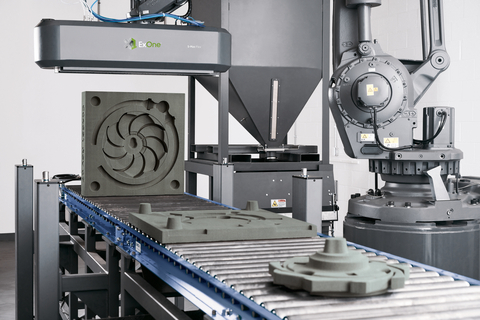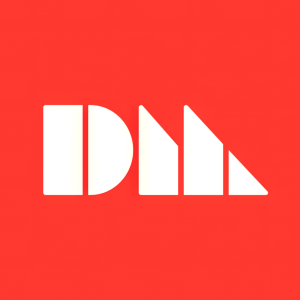Desktop Metal Introduces the All-New S-Max® Flex, a Robotic Additive Manufacturing 2.0 System that Makes Sand 3D Printing Affordable to Foundries Worldwide
Desktop Metal (NYSE: DM) has launched the ExOne S-Max® Flex, an innovative 3D printing system designed for foundries, which simplifies the casting of complex metal designs. Leveraging advanced Single Pass Jetting™ technology, the S-Max Flex is marketed as the most affordable sand 3D printer, aiming to democratize access to sand binder jetting. With a build rate of up to 115 l/h and a maximum print size of 4700 x 1000 x 1000 mm, it addresses labor shortages and rising demand in the metalcasting industry. The product will debut at CastExpo 2022, from April 23-26 in Columbus, Ohio.
- Launch of S-Max Flex expands Desktop Metal's product portfolio.
- Affordability of S-Max Flex aims to increase market access for foundries.
- High build rate of 115 l/h improves production efficiency.
- Responds to industry demand for faster and more cost-effective casting solutions.
- None.
- New system joins Desktop Metal’s category-leading ExOne S-Max line of industrial sand binder jetting solutions
-
S-Max Flex leverages the combined technology and application expertise of
Desktop Metal andExOne to offer an affordable, precise, and robust tool for foundries stepping into the next era of digital casting - Designed for turnkey ease of use, S-Max Flex uses Desktop Metal’s patent-pending Single Pass Jetting™ (SPJ) technology to print at high speeds delivering low part costs
- The most affordable sand 3D printer ever offered by the ExOne brand, the S-Max Flex aims to bring sand binder jetting to every foundry

The ExOne S-Max® Flex is an affordable and easy-to-use robotic additive manufacturing system that foundries use to 3D print large and complex sand molds and cores for metalcasting. (Photo: Business Wire)
The S-
“To achieve our vision of Additive Manufacturing 2.0, we need to make production 3D printing practical in terms of speed, cost, and material availability for a broad range of applications,” said
The S-
Additional early buyers of the new S-Max Flex include
Details of the S-Max Flex
The S-Max Flex pairs an affordable industrial robot with an all-new end effector printhead design that deposits binder into a 1900 x 1000 x 1000 mm (74 x 39 x 39 in) telescoping build box that grows as the parts are built layer by layer. Additional build box sizes are available up to 4700 x 1000 x 1000 mm (185 x 39 x 39 in), with taller versions available up to 1000 x 2500 x 2400 mm (39 x 98 x 94 in).
Desktop Metal’s high throughput SPJ technology delivers a build rate up to 115 l/h, which offers foundries quick and reliable production to operate more efficiently in times of ongoing labor shortages, as well as a faster return on investment. The S-Max Flex joins the premium S-Max® and S-Max® Pro solutions that are used in foundries worldwide.
The all-new S-Max Flex prints standard silica sand with furan binders and delivers final parts with dimensional accuracy of +/- 0.5 mm. The system comes with several accessories and safety features that are configurable to fit a variety of spaces.
Industries beyond metalcasting are also set to take advantage of the S-Max Flex’s large form factor and ability to binder jet a variety of powders. Infiltrated sand tooling for plastic thermoforming, composite layup, and sacrificial tooling applications are printed today on S-Max machines, along with infiltrated sand consumer products, such as those offered by Sandhelden and Deeptime. Desktop Metal’s Forust brand, which upcycles byproducts of the wood waste stream into consumer designs, will also leverage the new system to print large form factor wood parts at scale cost-effectively. Additional projects are underway printing reclaimed concrete and other materials.
Binder Jetting - the Fastest AM Method for Mass Production
Binder jet 3D printing is widely regarded as the fastest additive manufacturing method for the mass production of functional precision parts. Sand binder jet 3D printing has been used in foundries for more than two decades to create metalcasting tooling cost-effectively and with low turnaround times.
In the binder jetting process, an industrial printhead selectively deposits a binder into a bed of sand particles creating a solid part one thin layer at a time, similar to printing on sheets of paper. 3D printing straight from CAD files enables foundries to eliminate the months-long lead times and high costs of traditional patterns and coreboxes created from wood or metal. The design freedom of additive manufacturing also allows designers to innovate the parts made with the reliable casting process – creating complex, consolidated geometries that enable lightweighting and optimized part performance not possible with traditional processes.
For more information on the ExOne S-Max Flex system, visit www.exone.com.
About
Forward-looking Statements
This press release contains certain forward-looking statements within the meaning of the federal securities laws. Forward-looking statements generally are identified by the words “believe,” “project,” “expect,” “anticipate,” “estimate,” “intend,” “strategy,” “future,” “opportunity,” “plan,” “may,” “should,” “will,” “would,” “will be,” “will continue,” “will likely result,” and similar expressions. Forward-looking statements are predictions, projections and other statements about future events that are based on current expectations and assumptions and, as a result, are subject to risks, uncertainties. Many factors could cause actual future events to differ materially from the forward-looking statements in this document, including but not limited to, the risks and uncertainties set forth in
View source version on businesswire.com: https://www.businesswire.com/news/home/20220419005064/en/
Media Relations:
carolinelegg@desktopmetal.com
(203) 313-4228
sarahwebster@desktopmetal.com
(724) 516‑2336
Investor Relations:
jaygentzkow@desktopmetal.com
(781) 730-2110
Source:
FAQ
What is the ExOne S-Max Flex launched by Desktop Metal?
What technology does the S-Max Flex utilize?
When will the S-Max Flex be showcased?
How does the S-Max Flex benefit foundries?







